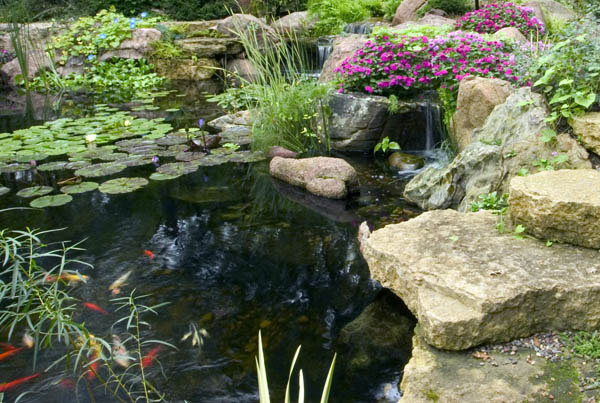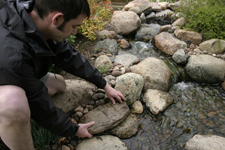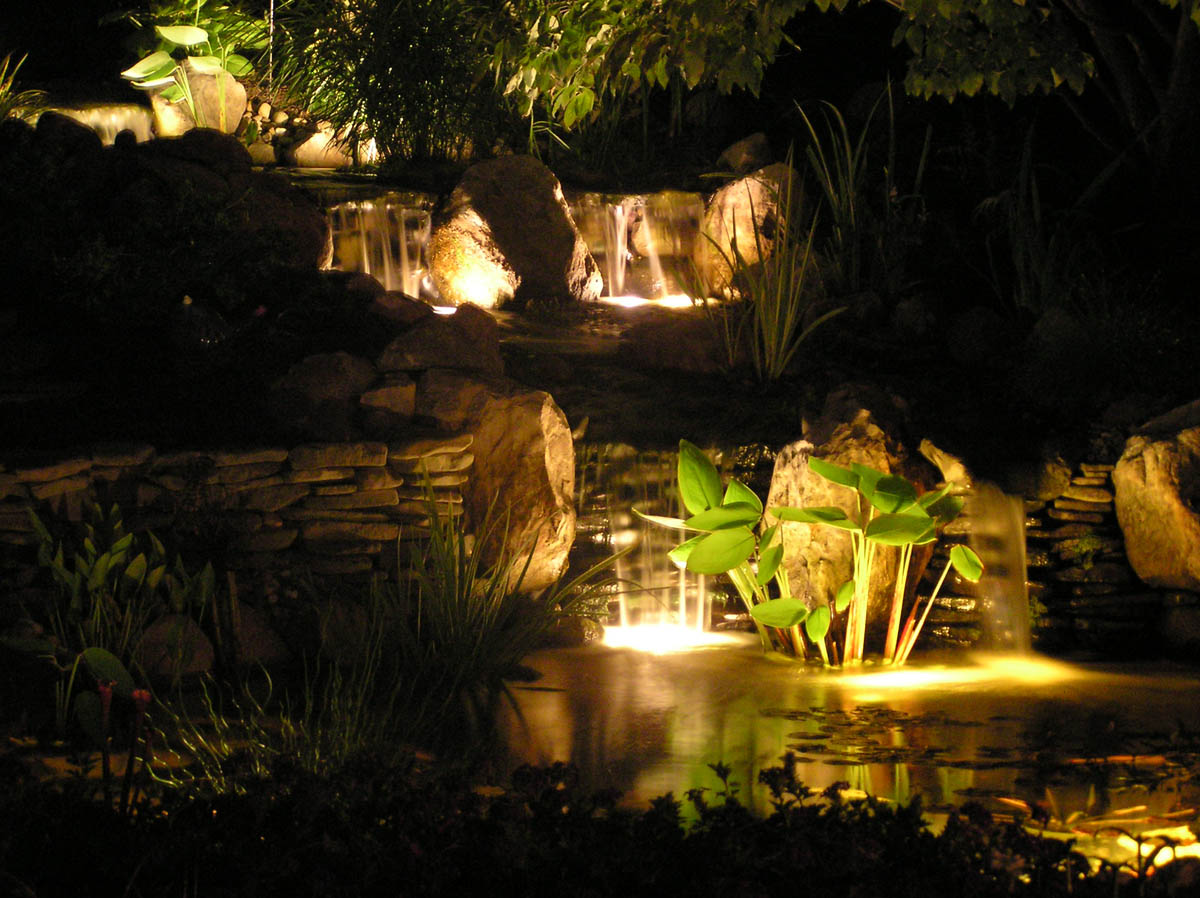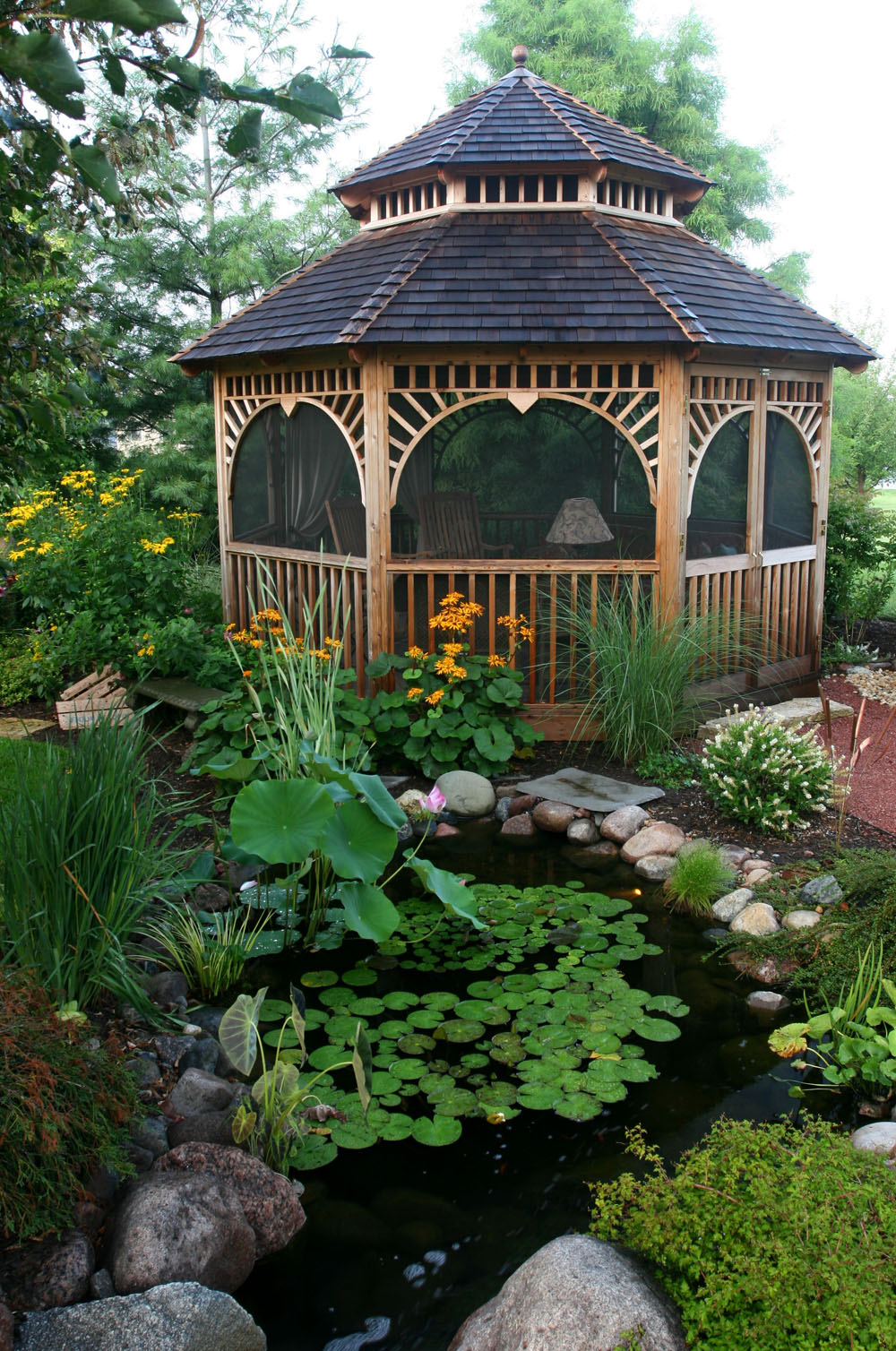Rethinking a Pond?
September 19, 2012
0
Shares

Ed Beaulieu
 It’s accepted wisdom in the pond business that most homeowners who get bitten by the watergardening bug will commonly own three ponds before they’re truly satisfied. They’ll start with a simple, small pond and work up through an intermediate stage before acquiring a large, full-featured pond that reflects their growing confidence and competence inmanaging complex ecosystems.
It’s accepted wisdom in the pond business that most homeowners who get bitten by the watergardening bug will commonly own three ponds before they’re truly satisfied. They’ll start with a simple, small pond and work up through an intermediate stage before acquiring a large, full-featured pond that reflects their growing confidence and competence inmanaging complex ecosystems.It’s also widely accepted that lots of decisions about what happen next take place over winter – a time of year when many watergardeners will sit back and think about what they might want to do next spring to transform familiar aquatic spaces from their current levels of excellence to even more perfect planes of existence.
This all makes sense: Winter is a time when leaves have fallen, plants have been pruned back and the pump and filter mats have been removed for safe cold-season storage. Maybe there’s only a bubbler to break the monotony as ice begins to overtake the surface. Even the fish slow down, preparing themselves for hibernation.
There’s really not much to do at the moment beyond trimming back terrestrial plants near a pond’s edges. What better time to start thinking about the season to come?
Winter Dreaming
At Aquascape (St. Charles, Ill.), we have enough experience with this lifecycle of pond ownership that we work with our dealers and their clients to encourage these wintertime thoughts about the future. Yes, it’s good for business, but it also makes homeowners happy and keeps them engaged with their ponds through what can be long months when the watershape does little on its own to conjure excitement.
To initiate these thought processes, we urge pond owners to sit back, close their eyes, put up their feet, take deep breaths and begin to consider places they’ve been where they’ve seen natural wonders that come close to perfection.
Have they seen raging rivers or serene, highly reflective lakes in Montana, Idaho or Colorado? Or do their tastes run to the lush, tropical waters of Jamaica, Bermuda or Key West? What is it about these places that’s most appealing? Most important, what can be gleaned from these memories and experiences that can be reproduced to make their backyards seem even more like paradise?
The possibilities here are infinite, but the first thoughts many pond owners have are about increasing the size of their ponds. Is there enough room to make this sort of move? Where will the excavation take place? How extensive will it be? Will the existing circulation and filtration systems be able to accommodate the increased water volume? If bigger is better, we all know that bigger requires planning.
Beyond Size
But what if the pond is already about as big as the yard will allow? Actually, that’s not much of a problem because there are many other things that can be done to transform even small ponds into centerpieces. Working with existing waterfalls and streams, for example, is often the answer in these cases: They invariably attract attention, and they are areas where real artistry can be applied to enhance their visual and aural powers of seduction.
 Reworking the pond’s edges is another possibility. Often, this involves little more than replacing a few small boulders with even fewer large ones – specimens that have more character or more interesting features, perhaps. There might be a fair amount of digging involved to install a really large boulder or two or three, but these larger rocks will lend a far more naturalistic appearance to the setting.
Reworking the pond’s edges is another possibility. Often, this involves little more than replacing a few small boulders with even fewer large ones – specimens that have more character or more interesting features, perhaps. There might be a fair amount of digging involved to install a really large boulder or two or three, but these larger rocks will lend a far more naturalistic appearance to the setting.Making the fish happier and safer is another possibility, in which case considering the addition of an underwater cave or two is another possible pond enhancement. These structures, which don’t involve much more than placing sections of large-diameter plastic pipe on the bottom of the pond and covering them with rocks and gravel, will give the fish places to shade themselves from the summer sunshine – and places to hide when herons and other predators stop by in quest of a quick bite to eat.
Working the Visuals
Not all of these winter thoughts need to be about the direct, physical features of the pond; instead, they can be about highlighting great features that are already there.
 Let’s start with underwater lighting, which is yet another step in the process of turning a pond into an aquatic paradise. The truth of the matter is that a pond without lights is a pond that homeowners can only enjoy half the time – especially if they spend their daytime hours away at work.
Let’s start with underwater lighting, which is yet another step in the process of turning a pond into an aquatic paradise. The truth of the matter is that a pond without lights is a pond that homeowners can only enjoy half the time – especially if they spend their daytime hours away at work.There’s something undeniably romantic and attractive about a pond at night with light illuminating every underwater surface. Indeed, there’s a lot more to be seen at night – a whole, new world that can’t really be seen in daylight.
Winter is also a good time to think about plants and their roles in pond systems. Again, it’s all about planning: If it seems that the plants are taking over, for example, now’s a good time to think about thinning the herd and rolling through a list of pond-owning friends who might benefit from a few new plants in their own watergardens. It’s also a great time for a bit of research devoted to seeking out plants that will bring new colors, textures and contrasts to pond settings.
 Finally, winter’s a good time to contemplate things beyond the pond that might enhance the overall appearance of the yard – such amenities as gazebos, bridges, fountains, seating areas or even simple decorative benches on which family and friends can sit and relax.
Finally, winter’s a good time to contemplate things beyond the pond that might enhance the overall appearance of the yard – such amenities as gazebos, bridges, fountains, seating areas or even simple decorative benches on which family and friends can sit and relax. Embracing Change
When it comes to freshening up the look of any pond at any stage in the ownership lifecycle, the possibilities are clearly endless – but they don’t all have to be complicated, time-consuming or expensive. Sometimes the simplest touches create the most profound improvements in the ways a pond looks and feels. It could be as simple as moving a few rocks around on the waterfalls to create a new sound, or adding a piece of driftwood to the stream.
The best thing about all of this is that forming a habit of winter dreaming will make pond ownership far more engaging and satisfying. Unlike so many of the touches we add to our homes and landscapes, ponds are truly evolving, changing and changeable ecosystems, always growing and maturing and responding to human management.
So even though Mother Nature might want us all to take a break over winter and stay inside for a while, what harm is there in a little dreaming of springtimes to come?
Ed Beaulieuis chief sustainability officer for Aquascape, a watershape design and installation company based in St. Charles, Ill. For more information, visitwww.aquascapeinc.com.









